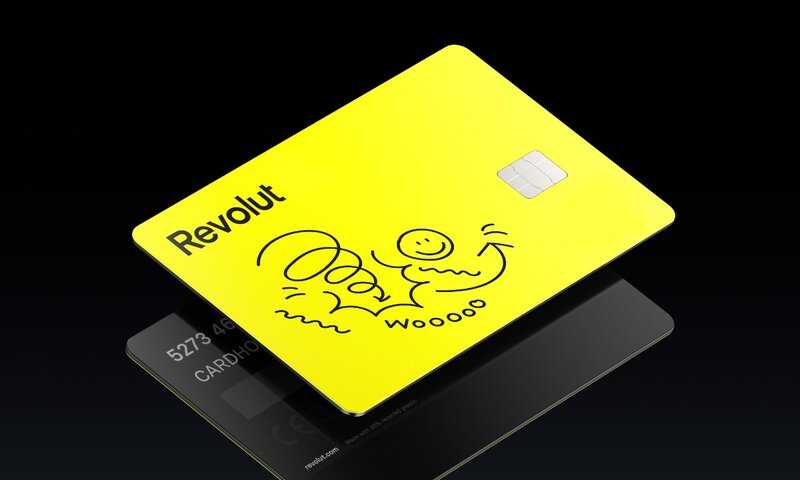What is peer to peer lending?
Peer to peer (or P2P) lending is a form of what’s usually an unsecured loan. However, the loans can be secured, too. Like the name suggests, you are either lending to or borrowing from your ‘peers’ - though they might not necessarily be your best mates!
On one end, there is the borrower, who applies for credit and is given an interest rate and a repayment schedule. This can be either an individual or small medium enterprise (SME) looking to access finance, with providers often specialising either in one group or the other.
On the other end there are a pool of investors - either institutional or individual - who funnel the money through the platform, which is then dished out to borrowers. The investors can receive a rate of return on their investment. It’s important to note, investors aren’t dealing with an individual borrower - rather, their funds are pooled together and then distributed that way. This mitigates risk somewhat. Though investing is not without risks, and the platform takes a clip on the way through, which we’ll explain more later.
P2P lending is a fairly new concept in Australia. The earliest lenders set up shop in Australia in the early 2010s, often coming from the United States or United Kingdom where the industry is much more established.
How do peer to peer lenders make money?
As the old saying goes, there’s no such thing as a free lunch. P2P lenders make money in a few ways, across both the investing and borrowing platforms.
-
Investors: Platforms often take a clipping of the returns, often by up to 10%. This means that on a $1,000 return via the interest, $100 could go to the platform. Some might also charge a fee to establish an account with the platform.
-
Borrowers: P2P platforms often charge an establishment fee, which is basically a fee to pay for the privilege of taking out a loan. Some might also charge monthly account keeping fees and more. Of course, if you fall behind on your payment you might also be subject to late payment fees and other penalties.
To paraphrase Michael Lewis, author of Liar’s Poker: “There is a magic moment, during which a man has surrendered a treasure, and during which the man who is about to receive it has not yet done so. An alert lawyer [read: peer to peer platforms] will make that moment his own, possessing the treasure for a magic microsecond, taking a little of it, passing it on.”
And that’s how peer to peer lenders make money - by holding on to the treasure just for that moment.
Considerations when borrowing
There’s a few considerations to make as a borrower using a P2P platform. They are:
Peer to peer lending amounts
Peer to peer lenders generally require a minimum loan amount of $2,000 for an individual, or $10,000 for a small business. From there, they usually max out at around $50,000 for an individual, and up to around $300,000 for small businesses. Evidently, this means you probably can’t buy a house using P2P! But you could buy a car, furnish a house and more.
Interest rates and fees
Here comes the big one - interest rates. P2P lenders often have tiered interest rates, based on your credit rating. The advertised rate is usually the best rate they have on offer, and can still amount to more than 6% p.a. For people with lower credit ratings, the interest rate could be more than 10%.
On top of that, there are also fees to consider for both investors and borrowers. For investors, the P2P platform often takes a clipping of the return on interest you’ve made. This could amount to up to 10% of the profit you’ve made. Also consider that you’ll need to pay capital gains tax on this return, as it’s an investment.
For borrowers, there are usually a few key fees to contend with. The biggest is usually the loan establishment fee, which could amount to $200-$300. On top of this, there could also be a monthly account keeping fee, which could be around $5-$10. When you bundle these up into an interest rate, it could be much higher than what you thought you were originally paying.
Repayment terms are usually also anywhere from six months to seven years. Consider that while a shorter term will make your weekly, fortnightly, or monthly payment higher, the less interest you’ll ultimately pay. Often it’s about striking a balance between an affordable monthly payment and how it fits into your budget, and how much interest you’re willing to pay.
Peer to peer lending with bad credit
If you’ve got a poor credit history, it’s generally harder to get a loan. Whether that’s due to unpaid debts or taking out too many lines of credit, you may think you’re out of luck when it comes to getting a loan. However, some P2P lenders cater to people with bad credit.
Generally, P2P lenders offer what’s called a tiered interest rate system. The people with the best credit ratings generally get the lowest interest rates, while those with poorer credit ratings tend to be charged higher rates. There’s no hard-and-fast rule that a credit rating of X means an interest rate of Y, but if you’ve got a shoddy credit rating, you could face higher rates of interest. The best rates could be around 6% p.a., but those with a poor credit history could see that interest rate blow out to 10% or more.
Secured or unsecured
Many P2P lenders focus on unsecured lending, meaning the loan is not tied to anything like your car or another asset. Secured lending is essentially the opposite, and some lenders offer these types of loans, mainly for small businesses. Small businesses can secure their finance against equipment, assets and more, in return for a potentially lower interest rate. The secured vs unsecured debate is largely the same for P2P lending as it is for other types of loans.
P2P loans for small businesses
As mentioned earlier, P2P lenders generally specialise in either consumer lending, or business lending. Various SME P2P lenders are:
-
Bigstone
-
MarketLend
-
OnDeck
-
Thincats
With SME lending, you can generally borrow more than you can through a consumer loan, sometimes to the tune of up to $300,000. However, not just anyone can get an SME P2P loan - there are usually stipulations about how much turnover you need to generate, as well as having traded for a number of years.
Considerations when investing
Investing in P2P, like with any type of investing, carries some form of risk, as well as other considerations explained below. It’s essentially the other side of the coin when it comes to P2P lending.
Risks with peer to peer investing
As with most types of investments, there is a chance with P2P investing you could lose your money. Rather than investing in a single borrower, investments made through P2P are often pooled together, and operate much like a managed fund. Of course, on the other end of the investment, there are people and businesses who have to maintain their repayments.
In the event of a borrower default, the P2P platform usually chases the debt or aims to settle it in court. However, as pools of borrowers start to default, the chances of you seeing a return on your investment dwindles. And as some investment classes are ‘fixed income’, this usually means you can’t just withdraw your funds when the going gets tough - you have to ride out the storm.
Investment pools are generally split into ‘tranches’, meaning the riskier classes of borrowers attract a higher rate of interest, but are also first to absorb the losses of the wider loan pool. Conversely, investors could also opt for a safer pool, which attracts a lower rate of interest, but a slightly lower risk of losing money.
Interest rates and fees
While a borrower may be paying 6% or more in interest per year, that doesn’t necessarily mean you’re getting that directly in your account. Instead, for an investor, calculating interest is a lot more complex.
Generally speaking, if you opt for a longer investment, the higher your rate of return, but the higher the risk there is of something going wrong with the borrowers. In the instance of P2P platform Plenti, at the time of writing, on some investment portfolios the platform is spruiking “up to” 6.5% interest. However, some users on other investment types are attaining rates as low as around 1-2%.
The other part of the equation is the fees. Again, the longer you invest, the lower your fees might be. The number one fee that seems to affect investors is the clipping the platform takes when you make a profit. This could be up to 10% of what you make. Meaning if you made $100 in interest, the P2P provider could take $10 of that. Not to mention, you’ll also be subject to capital gains tax should you withdraw your funds.
Minimum investment amounts
P2P isn’t like micro-investing or a savings account where you can invest by the dollar. Instead, many P2P platforms require a minimum investment of $1,000 to $2,000 to get started. From there, it might get easier, with subsequent deposits required as low as $10. Some SME P2P platforms might require an even greater minimum investment, sometimes to the tune of $10,000 or more.
Savings.com.au's two cents
P2P lending has largely been a welcome addition to the Australian finance landscape. At the end of the day, it provides borrowers with another avenue for credit, and investors with another option in which to pool their dollars. However, P2P lending is not without its downfalls. As they are mainly unsecured loans, the rate might be higher than if you took out a secured loan, say for a car or for equipment. For investors, also, the risk is greater than some asset classes, but could be less risky than individual shares, or cryptocurrency. In this sense P2P is in many ways a ‘mid market’ type of loan and investment, with moderate amounts of interest, and moderate amounts of risk. In any case, compare your options before parting with your hard-earned dollars.

.jpg)

 Harrison Astbury
Harrison Astbury
 Harry O'Sullivan
Harry O'Sullivan